September 21, 2013 at 2:37 pm

This week’s photo shows what is now left of a vibrant larch plantation at Clough Bottom near Burnley. I have been monitoring the breeding birds in this plantation for more than thirty five years and on the fourteenth of May each year there would have been more than fifteen species of birds nesting in the pines comprising birds like Goldcrest and up to one pair of Sparrowhawks. I say would have been but not this year, as shortly after that date Tilhill Forestry acting on the approval of the landowners United Utilities cut down all the larch trees prior to their removal. As this was at the height of the breeding season you would have thought that they were contravening the Wildlife and Countryside Act 1981 which was set up to protect all breeding birds and their nests. Well they got around this by sending in one of their employees on the fourteenth of May to look for any nests. He claims that,even though I know more than fifteen species of birds were breeding in the pines, he could not find any nests so the felling went ahead. To me this is a blatant abuse of the Countryside Act as there is no right of recourse and of course the trees have now gone. It would have been totally impossible in one day to examine each tree for the nests of such birds as Goldcrest, Goldfinch, Redpoll and Siskin that even to an expert nest- finder are hard to locate. Quite clearly Tilhill Forestry paid lip service to the Act and their only intention was to extract the timber as fast as possible. What has gone on at Clough Bottom is an absolute disgrace. Tilhill Forestry and United Utilities should be ashamed.
On a lighter note the Foxes on Hopwood are now dispersing. Click here for Fox photos.
September 15, 2013 at 4:28 pm
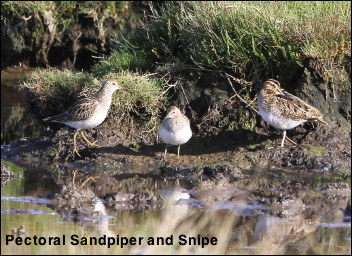
Another visit to Morecambe Bay on the fourteenth produced this week’s distant view of not only one but two Pectoral Sandpipers as they fed happily next to a Snipe. The wader passage this Autumn has been exceptional and in addition to the Sandpipers there were still seven Greenshank, three Spotted Redshanks, four Curlew Sandpipers and a Green Sandpiper feeding in the Autumn sunshine, Butterflies had also continued to enjoy the sun with Small Copper,Wall and Brimstone all active. Click here.
On the local moors family parties of Stonechats are on the move with Whinchats now beginning to head South. A Redstart was also present and Grey Wagtails were moving out of the valleys. The Adder site still had five Adders enjoying the Autumn sunshine.
Whilst in the garden on the ninth I heard the alarm calls from the House Martins overhead and looking up was amazed to see a hunting Hobby. On Hopwood the planting of gorse has resulted in three pairs of Linnets breeding successfully for the first time. This morning along the canal a Kingfisher was present.
September 8, 2013 at 6:05 pm
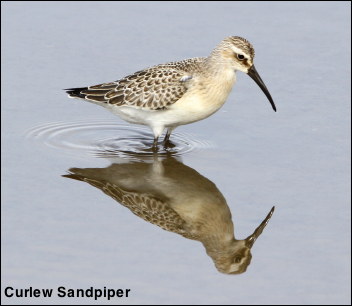
More good weather during the week . I spent a glorious four hours on Morecambe Bay filming up to ten species of wader. The undoubted highlight was filming twenty four Curlew Sandpipers which were birds I had never even seen before. Most were juvenile birds that had come from Siberia and usually pass through the area in just a couple of days. I count myself lucky to have spent a magical morning in perfectly calm conditions with those long distance migrants. Click here to view. At one point one was almost lost to a hunting Sparrowhawk that got within two foot of a catch. More than thirty Egrets were present at dawn together with a couple of Snipe that performed well for the camera.
The big news from the garden was that we had a new bird on the 2nd when a Whitethroat fed on the honeysuckle berries for a full five minutes giving us some good views. The Greenfinches have now suddenly increased to twenty three and on the 6th the Nuthatch made a welcome return. Also on the 6th twenty Swallows rested on the telephone wires outside the house. Positive signs of a movement South as Northerly winds set in. Has Summer come to an end?
September 1, 2013 at 6:38 pm
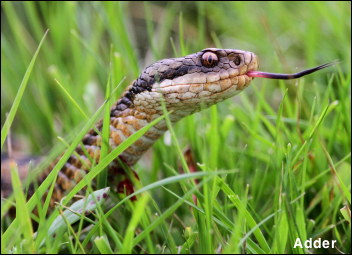
With warm sunny weather during the week I visited my Pennine Adder site and was surprised to find seven Adders in the area. Better still one was actively hunting with its body raised off the ground showing the orange rings which I have never seen before. I finally obtained the shot I was after with its fang fully extended and well away from me!
I paid a visit to Pennington flash one day and was able to film a late pair of Great Crested Grebes that still had eggs and one newly hatched young. Stock Doves were feeding on seeds on the marsh with Common Sandpipers already moving South on migration. Click here for this weeks photos
In the garden the Wood Pigeons have now increased to five and the Greenfinches to eleven made up of mainly young birds , another indicator of a good breeding season.
August 25, 2013 at 6:56 pm
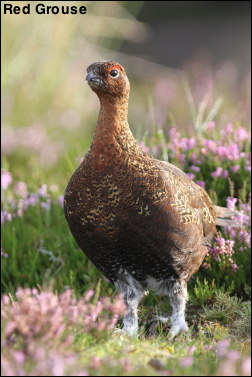
There is little doubt that the high moorlands of the Yorkshire Dales are at their very best when covered in purple heather during August. On the 23rd I drove through thick mist in the valleys to reach the high tops before 7am. It was a magnificent morning with no wind, no traffic and Red Grouse everywhere. The warm dry weather of June has been perfect for the young grouse and both Red and Black Grouse have had their best season for decades. In two glorious hours I obtained all the shots I was after of Red Grouse in purple heather. A Whinchat was also present providing a bonus but not a bird of prey was seen. I wonder why! Click here to view the Grouse and scenery of the Dales.
On 22nd August a party of tits in the trees at the bottom of the garden included a record seventeen Long Tailed Tits. Four Wood Pigeons are still feeding regularly as are a reduced number of Redpolls.
August 17, 2013 at 6:56 pm
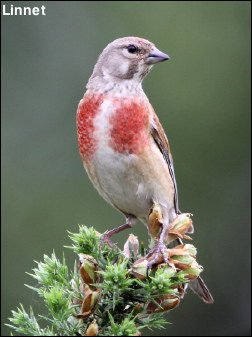
During the last few weeks I have been filming a collection of late Summer breeding birds. These include Willow Warbler and Meadow Pipit with food, a Spotted Flycatcher with a large item of prey along with a fast flying Swift all can be seen in this week’s gallery together with a photo of a mass of midges! Click here.
A walk in a quiet part of Cheshire produced a pair of Little Owls with a recently fledged young and better still two fledged Hobbies awaiting the return of the adults. In the hills a last search was made for Nightjars but all to no avail, instead time was spent gathering my favourite fruit of Summer the Whimberry – now in the freezer ready for my Christmas Day dessert. There is nothing quite like a Whimberry crumble.
Locally along the canal charms of Goldfinches have been feeding on the thistle heads. In the garden we had a record four Wood Pigeons feeding in pairs and a very late brood of House Sparrows still being fed by the adults.







